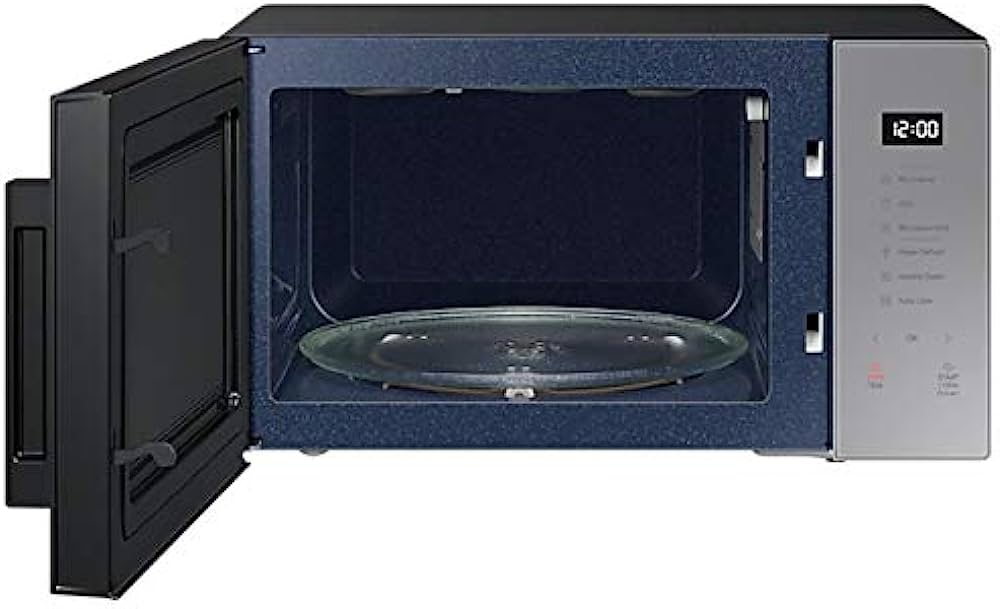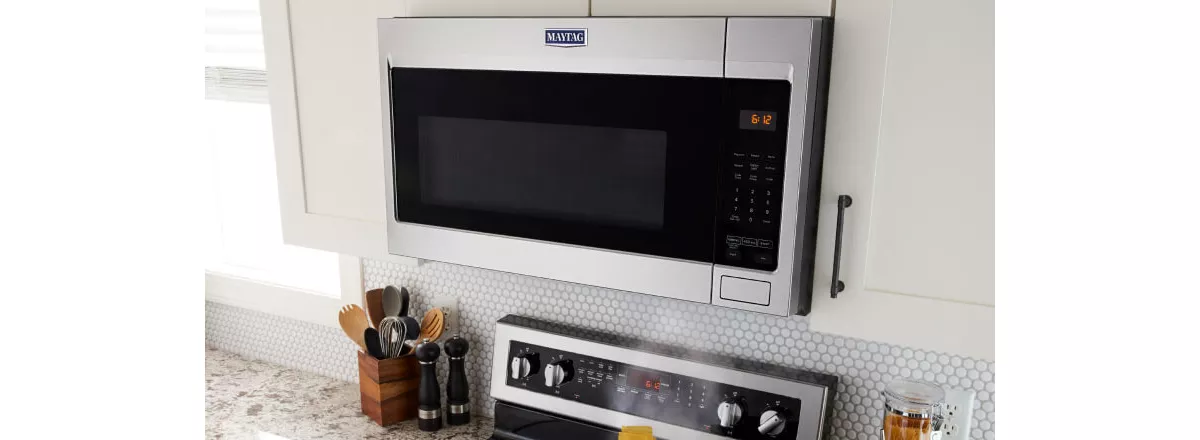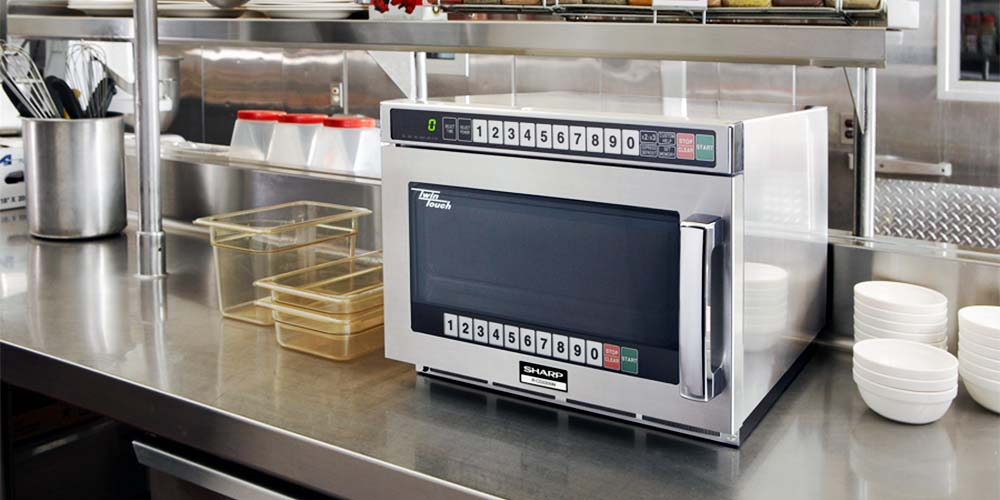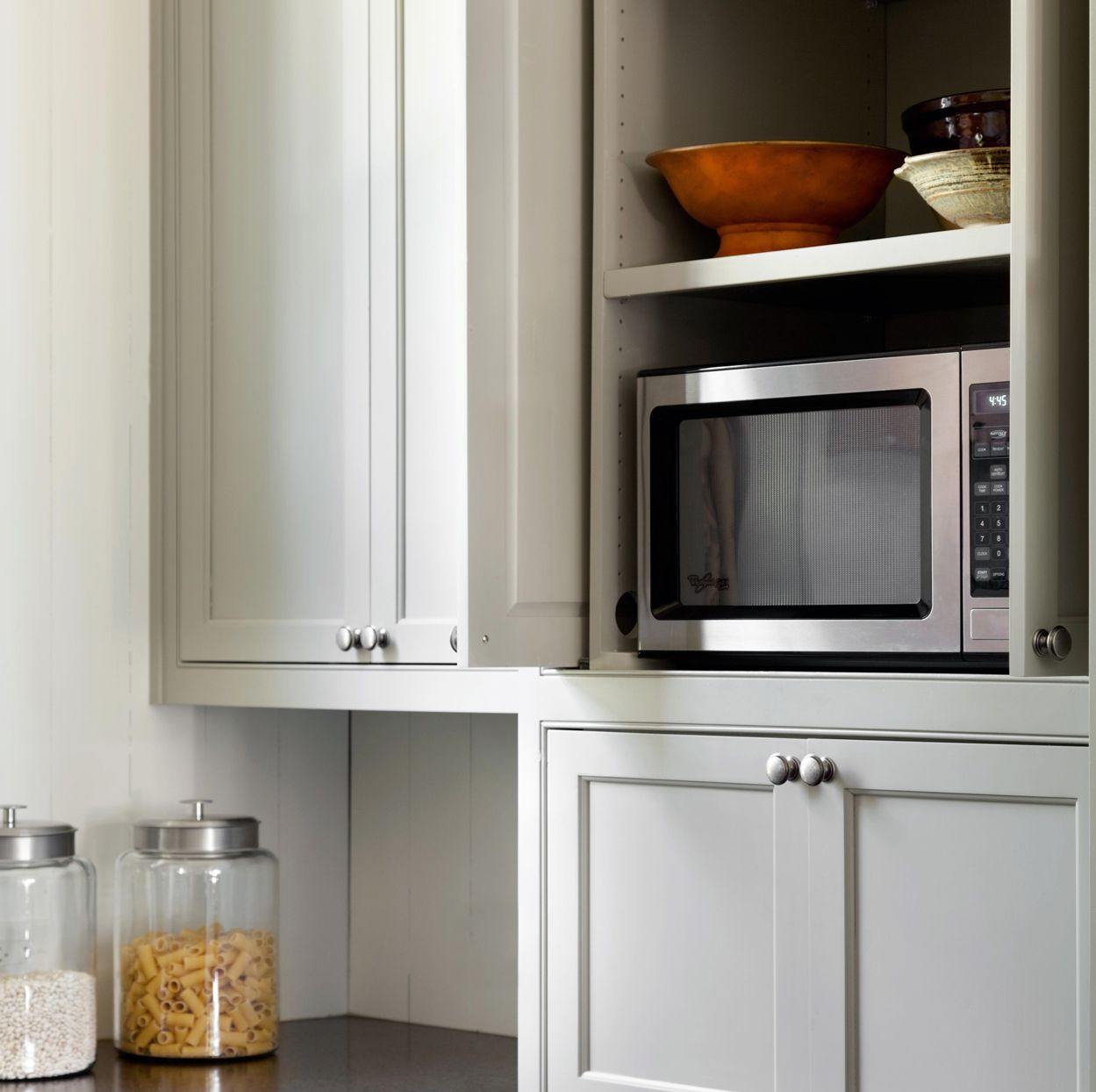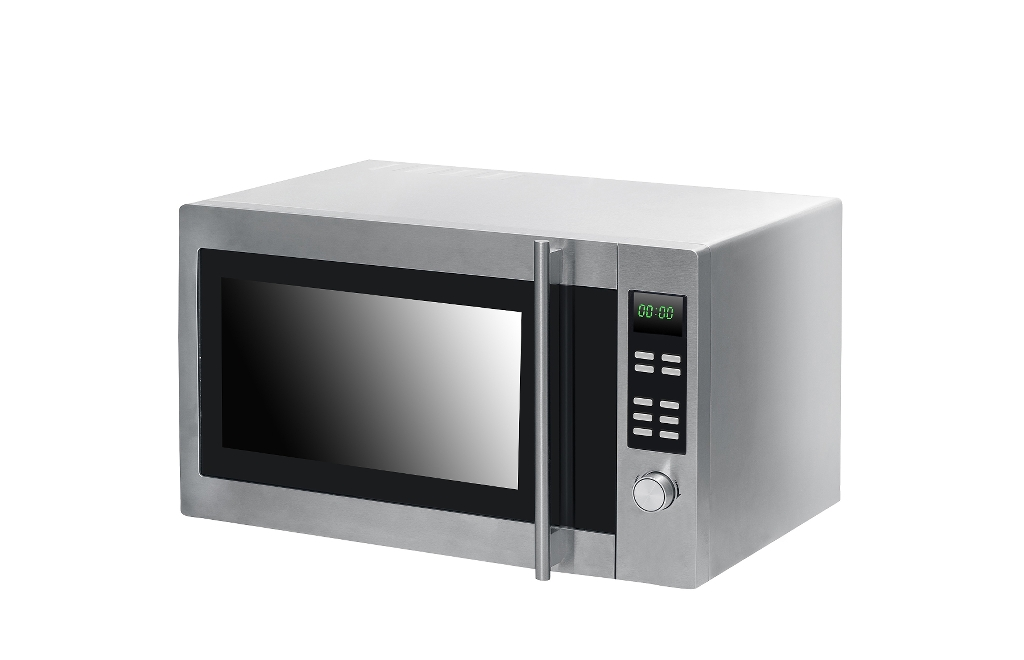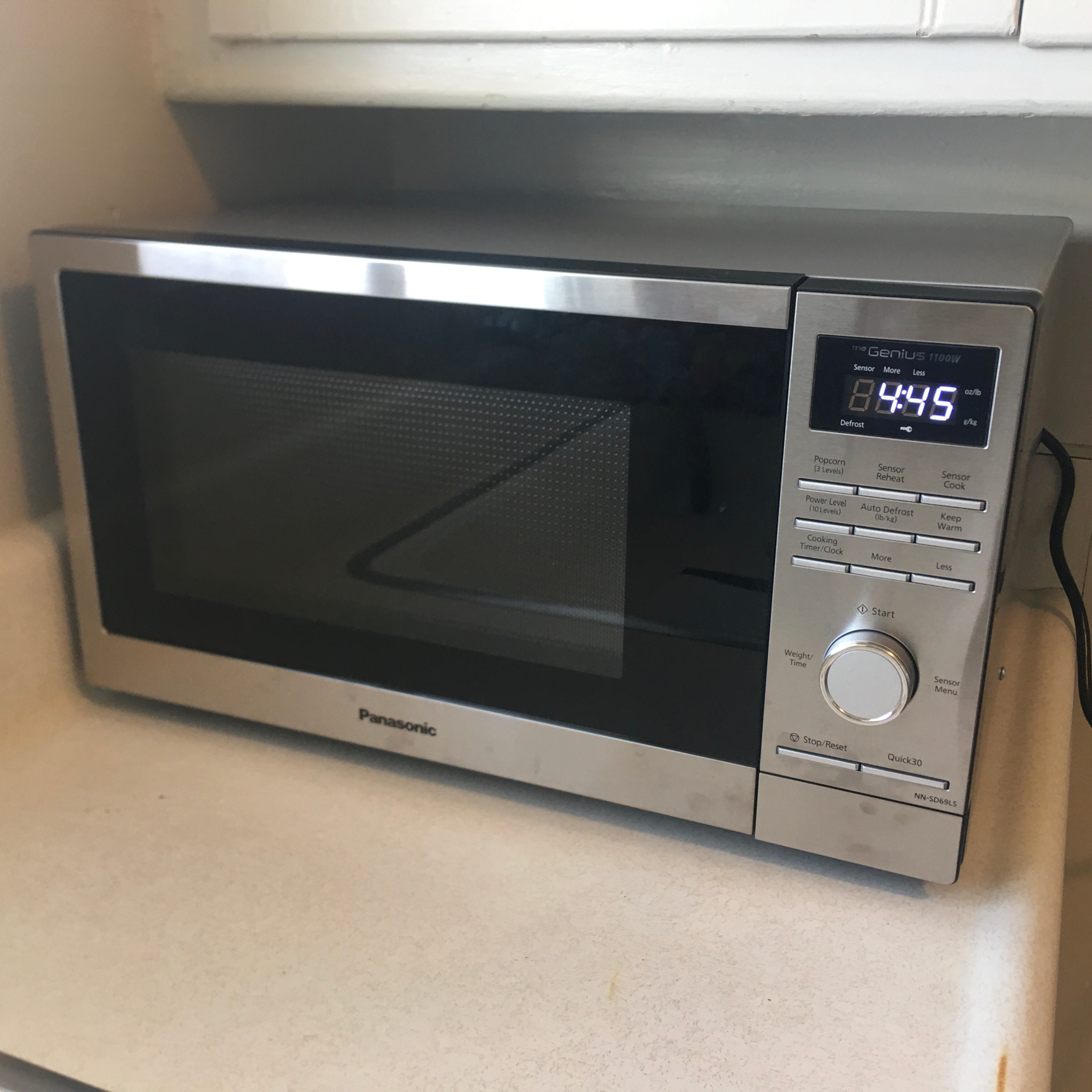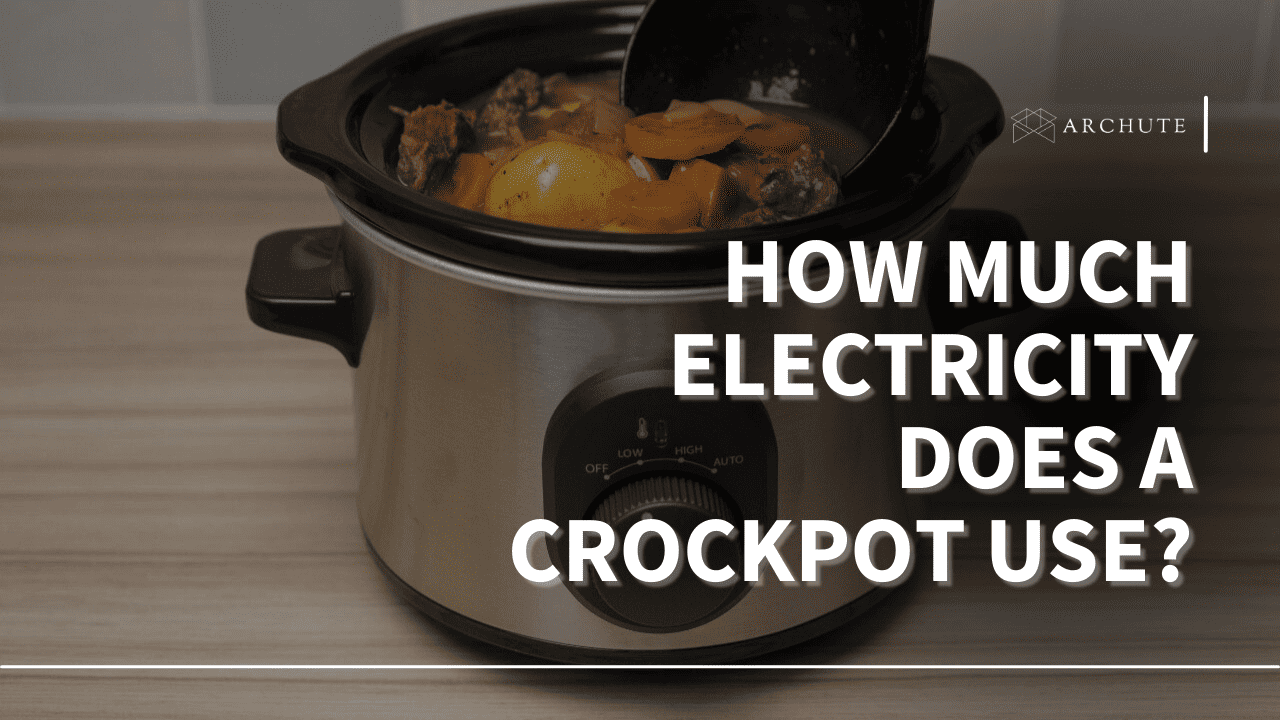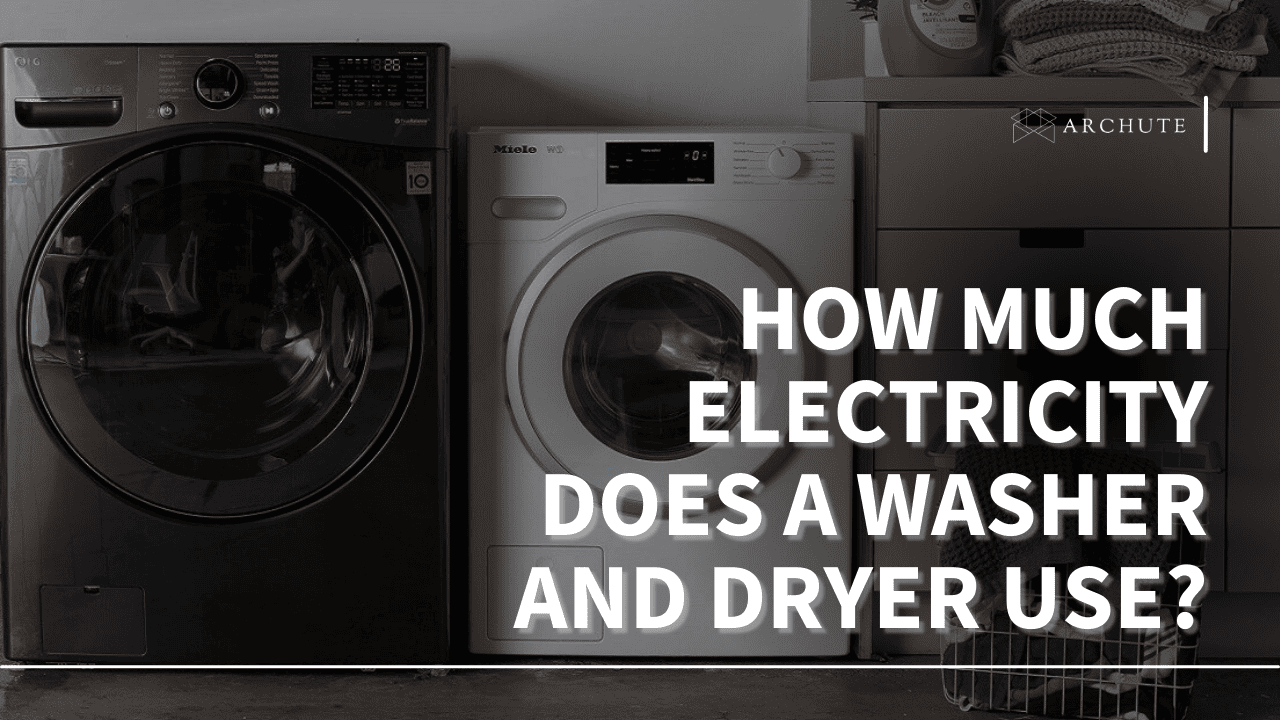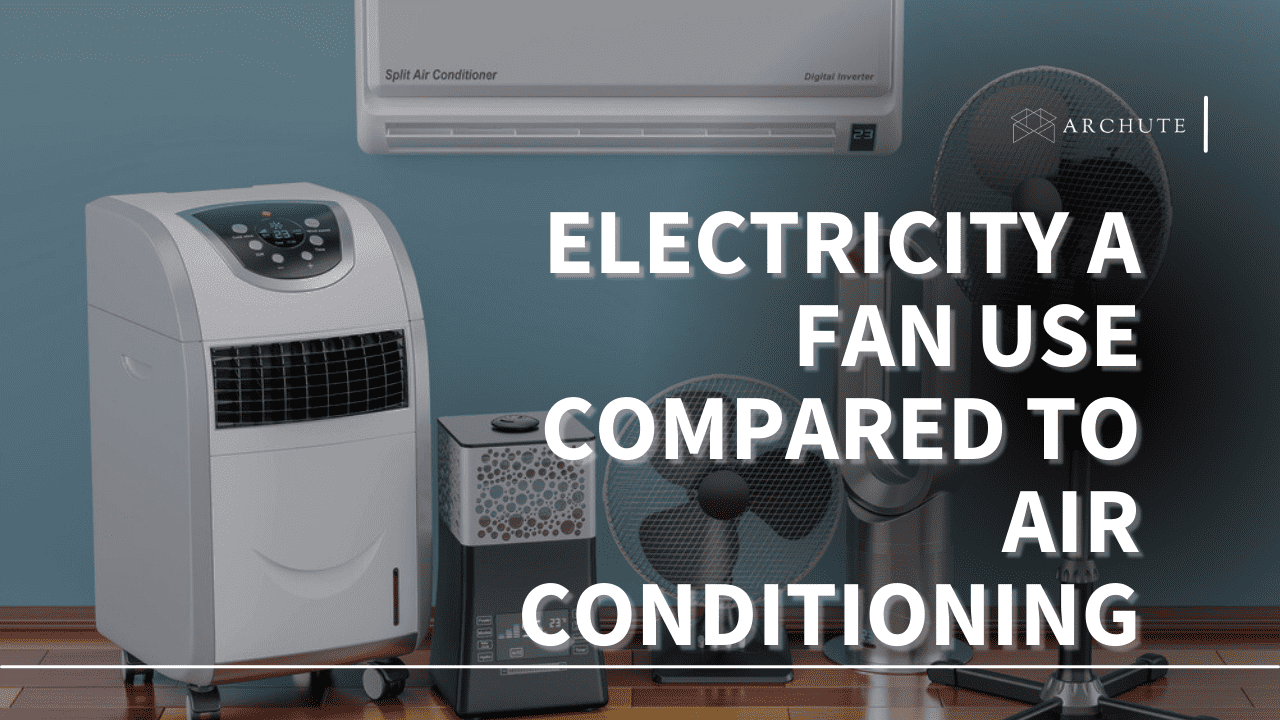How much electricity does a microwave use? This is the first question you will ask when you want to purchase one. For this question to be answered suitably, we need to understand how a microwave operates and the energy it consumes.
A microwave has become a popular appliance in our kitchens. This gadget uses microwave radiation to reheat food. Other more advanced models can cook and bake. Since it is quite handy, it also consumes a lot of electricity. Therefore, it is important to know how much energy an average home microwave oven uses so that you can control electricity bills.
How Many Watts Does a Microwave Use?
Microwaves energy consumption is measured in watts. Average microwave wattage depends on how often it is used, energy efficiency rating, and the model. It is possible to categorize microwaves based on their energy consumption as follows:
1. Compact Microwave
Image Source: amazon.com
This microwave is small and uses little electricity compared to the rest. It is mainly found in hotel rooms, student accommodations, or small households. It uses 600-800 watts. This is the best microwave to save energy and lower your electricity bills. However, the power levels for compact microwaves are quite lower. The appliance takes a long time when cooking food.
2. Standard Microwave
Image Source: maytag.com
It is slightly larger than a compact microwave. It can be found in most kitchens at homes and workplaces. This appliance uses more energy, and it has a higher cooking power. Its wattage is between 800 and 1000. The power level on this microwave is higher. Thus, it cooks food quickly.
3. Commercial Microwave
Image Source: learn.compactappliances.com
It is large and has powerful settings. This type of microwave has the highest energy consumption and the lowest cooking time. It is used in restaurants, hospitals, and high-end hotels because it allows large amounts of food to be heated at a go.
Commercial microwaves use over 1,000 watts. It also allows for power settings to be put in place so that you save electricity without utilizing full power.
How Much Does it Cost To Run a Microwave?
Image Source: bhg.com
To determine the cost of running your microwave, you have to do some math. The steps below will guide you on how to estimate the total cost.
i) Determine the wattage of your microwave oven. This you can find on a sticker at the back of your gadget. It is also known as the power rating.
ii) Use the wattage to calculate the kilowatts per hour.
1 kilowatt per hour (KWh) = 1000 watts
iii) Since you have determined the energy your microwave consumes in one hour, you need to multiply this figure by the time it has run. This gives you the total amount of energy consumed that day.
iv) To determine how much it costs to run a microwave, multiply the energy consumed by the cost of usage per KWh. This cost varies from one state to another.
Energy cost of running your microwave = (kilowatts/hour) x (time running) x (Cost ($) per kilowatt-hour)
v) If you want to save costs by lowering your electric bills, purchase an energy-efficient microwave. The market is currently offering the best energy-efficient microwaves at different price points. Just choose one that fits your needs and is pocket-friendly.
Factors that Influence the Energy Consumption of Microwaves
Image Source: eta.lbl.gov
Microwave ovens have become important appliances in our homes. They help us save time because they heat and cook food quickly even though their energy consumption is quite high. The following factors determine a microwave’s energy usage:
1. The Size of the Microwave
One of the main criteria when selecting a microwave oven is the size. A large microwave uses more electricity than a smaller one. This is because more energy is utilized to heat up a larger space. Smaller microwaves are also great for people who do not have a lot of kitchen space.
2. The Usage of the Microwave
How you use your microwave determines how much electricity bill you will pay at the end of the month. If you use the appliance for longer, electricity usage goes up. Thus, if you do not use the gadget frequently, it would be best to buy a low-wattage microwave. However, large models are recommended for bigger families.
3. Microwave Wattage
A microwave oven may be low-wattage or high-wattage. The higher the wattage, the more powerful the gadget. If your goal is to save on energy, you can purchase a microwave with low-wattage. However, the one with higher wattage may heat up food more quickly and save time.
4. The Type of Food
Different foods take dissimilar amounts of heat to cook. For example, food such as meat would take longer to heat than vegetables or cereals. The longer it takes for food to heat up or cook, the higher the microwave energy consumption.
5. Age
A microwave oven is not meant to last forever. Most of them have a lifespan of ten years. The older the microwave gets, the more energy it uses. The magnetron that is responsible for transforming electrical energy to microwave energy has lost its strength over the years. Thus, what would take 25 seconds to heat up today would take 50 seconds in the next seven to ten years.
6. Maintenance
A gadget is always as good as how well it is maintained. It can serve you longer if it is properly maintained. A microwave is no different. Correct cleaning and upkeep can enhance its energy efficiency. A properly cleaned appliance reflects microwave energy better. Hence, saving more energy.
7. Standby Power Consumption
Every electrical appliance has a small power consumption when on standby mode. This is the power that is utilized by electrical devices when they are off but plugged in. When in standby mode, a microwave’s wattage is between 2 and 7. Different microwave models have dissimilar standby power consumption. It is advisable to check before purchasing.
8. Microwave Models
The kitchen gadget world offers a variety of microwave ovens. The design of your appliance and the material used to manufacture it determine the amount of energy it consumes. There are models that are energy star appliances. These ones are energy-efficient microwaves. Always check the energy star rating on microwaves before making a purchase.
Frequently Asked Questions on Microwaves’ Wattage
Image Source: wikipedia.com
1. Does Using a Microwave Use a Lot of Electricity?
Yes. A microwave can use a lot of electricity. The total amount of energy consumed by your microwave will depend on the amount of time it is in use. Most microwaves are used for a few minutes a day. Well, this is with the exception of commercial microwaves that are used for a couple of hours a day.
2. How Much Does It Cost To Run a Microwave For 1 Hour?
The cost to run a microwave is dependent on a number of factors such as the size, type of food, and model just to name a few. On average, it may cost you $0.15 per hour to operate a compact microwave and $0.21 per hour to run a standard one. However, you can spend up to $0.44 per hour to run powerful microwaves. Even so, the amount you pay at the end of the day will depend on the power rating in your area.
3. How Many Solar Panels Will Power My Microwave?
You can use solar energy to power your microwave. A standard microwave uses about 800 watts, meaning three or four solar panels of 350 watts each could power it. The fact that you use the microwave for only a few minutes a day helps you save money.
4. How Much Electricity Does a 1000 Watts Microwave Use?
Most microwave recipes call for a gadget that uses between 700 and 1000 watts. Even though the wattage level may seem like a lot, these microwaves do not use up a lot of electricity. Energy consumption will greatly depend on the length of time that the gadget is in use. On average, a 1000 watts microwave consumes 91.3 kWh per year.
5. Can a Solar Generator Run a Microwave?
Yes. Solar generators can run a microwave because they produce above 1,000 watts. Nevertheless, you must be careful when using a solar generator so the appliance is not damaged. For this reason, the solar generator should be reliable and provide power consistently.
Conclusion
Microwaves are very handy appliances to have in our homes. They help us to save time while heating and cooking food. We always wonder how much energy it takes to run this gadget and whether it fluctuates our electric bill too much. Well, this guide will help to answer this important question. In addition, modern technology and innovation have resulted in the manufacturing of some of the best energy-efficient microwaves. These will help you save costs.
How many kilowatt-hour does a microwave consume? This is the first question you will ask when you want to buy one. To appropriately address this question, it is important to have knowledge of how a microwave works and the energy it uses.
A microwave has now become a common kitchen appliance. This gadget works by the use of the microwave radiation to heat the food. Others more sophisticated models can fry and bake. Since it is quite handy it also consumes a lot of electricity. Thus, it is crucial to understand how much energy an average home microwave consumes so that you can be able to regulate your electricity bills.
How Many Watts Does A Microwave Use?
The energy consumption of microwaves is in terms of watts. The average microwave wattage also depends on the frequency of use, the energy efficiency rating, and the model. It is possible to categorize microwaves based on their energy consumption as follows:
1. Compact Microwave

Image Source: amazon.com
This microwave is compact and consumes less electricity than the rest. It is mainly supplied in hotel rooms, student accommodations or small households. It uses 600-800 watts. This is the best microwave to save energy and cut electricity bills. However, the power levels for compact microwaves are much lower. The appliance is quite slow when it comes to cooking food.
2. Standard Microwave

Image Source: maytag.com
It is a bit bigger than a compact microwave. It is used in kitchens of houses and offices. This appliance consumes more energy, and it has a high cooking power. Its wattage is from 800 to 1000. This microwave has a higher power level. Therefore, it can cook food fast.
3. Commercial Microwave

Image Source: learn.compactappliances.com
It is large and has strong controls. This type of microwave is the most energy consuming and the smallest cooking time. It is used in restaurants, hospitals and high end hotels because it can heat a lot of food at a time.
The average commercial microwaves consume over 1,000 watts. It also enables one to set power values to save on electricity rather than using full power.
How Much Does It Cost To Run A Microwave?

Image Source: bhg.com
I. Calculate the wattage of your microwave oven. This you can find on a sticker at the back of your gadget. It is also referred to as the power rating.
ii) Convert the wattage to kilowatts per hour.
1000 watts = 1 KWh.
iii) Energy consumed by your microwave in one hour = Energy consumption per hour X Time the microwave is run. This gives you the total amount of energy consumed within the day.
iv) To calculate the cost of running a microwave, multiply the power consumed by the rate of cost per KWh. This cost differs from one state to another.
Energy cost of running your microwave = (KW) X (hours) X (Cost $ per KW).
v) If you are interested in saving on your electric bills then you need to buy an energy efficient microwave. Right now, the market is providing the best energy-efficient microwaves at different price ranges. simply select the one that suits you and is affordable.
Factors That Influence The Energy Consumption Of Microwaves

Image Source: eta.lbl.gov
Microwave ovens are essential home appliances. They save time because they heat and cook food faster even though their energy use is relatively high. The following factors determine a microwave’s energy usage:
1. The Size Of The Microwave
Another important factor when choosing the microwave oven is the size of the oven. A big microwave consumes more electricity as compared to a small one. This is because a large space requires more energy to heat up. Compact microwaves are also ideal for individuals who have limited space in the kitchen.
2. The Usage Of The Microwave
The amount of electricity bill that you will be charged depends on the way you use your microwave. The longer you use the appliance the more the electricity consumption. Therefore, if you are not going to use the gadget on a regular basis, it would be better to opt for a microwave with a low-wattage. But large models are preferred for large families.
3. Microwave Wattage
A microwave oven can be either low wattage or high wattage. A high wattage means that the gadget has a high power potential. If you want to save on energy, you can buy a microwave with low wattage. However, the one with higher wattage may heat food faster.
4. The Type Of Food
Various foods require varying amounts of energy to cook. For example, meat would take a longer time than vegetables or cereals to heat. The higher the time taken for food to heat up or cook, the greater the consumption of microwave energy.
5. Age
A microwave oven is not a lifetime product. They live for about ten years. The energy consumption increases as the microwave ages. The magnetron that converts electrical energy to microwave energy has deteriorated over the years. Therefore, what would take 25 seconds to heat up today would take 50 seconds in the next seven to ten years.
6. Maintenance
Any gadget is as good as the maintenance it receives. It can last longer if it is well taken care of. A microwave is no exception. Proper maintenance and cleaning will help to improve its performance in terms of energy efficiency. A properly cleaned appliance reflects more microwave energy. Hence, saving more energy.
7. Standby Power Consumption
All electrical devices have minimum power consumption in the standby mode. This is the power that is used by electrical appliances when they are switched off but still connected to the mains. Current draw for a microwave in standby mode is between 2 and 7 watts. It should be noted that various microwave models have varying standby power consumption. One should check before buying.
8. Microwave Models
The market for kitchen gadgets offers a range of microwave ovens. The amount of energy used by an appliance depends on the design and construction material of the appliance. There are models that are energy star appliances. These ones are energy efficient microwaves. It is important to always read the energy star rating on microwaves before purchasing one.
Frequently Asked Questions On Microwaves’ Wattage

Image Source: wikipedia.com
1. Does Using A Microwave Use A Lot Of Electricity?
Yes. A microwave consumes a lot of electricity. The total amount of energy consumed by your microwave will depend on the time duration used. A typical microwave is only operated for a few minutes a day. This is with the exception of commercial microwaves that are utilized for a couple of hours daily.
2. How Much Does It Cost To Run A Microwave For 1 Hour?
The energy consumed to operate a microwave depends on several factors including size, type of food, and model of microwave, among others. It may cost you up to $0 on average. $0.15 per hour to use a compact microwave. 21 per hour to operate a standard one. However, you can spend as much as $0. $44 per hour to operate high intensity microwaves. Nevertheless, the final cost may vary depending on the power rating in your area.
3. How Many Solar Panels Will Power My Microwave?
Solar energy can be used to run your microwave. A standard microwave uses about 800 watts so three or four solar panels of 350 watts each could power it. The fact that you use the microwave for a little period of time in a day enables you to save your money.
4. How Much Electricity Does A 1000 Watts Microwave Use?
Microwave recipes usually require a tool operating between 700 and 1000 watts. Despite the fact that the wattage level may appear to be high, these microwaves do not actually consume much electricity. The amount of energy used will vary depending on the duration of use of the gadget. A 1000 watts microwave uses 91. 3 kWh per year.
5. Can A Solar Generator Run A Microwave?
Yes. Solar generators can be used to power a microwave because they generate more than 1000 watts. However, you have to be cautious whenever using the solar generator so that it does not destroy the appliance. It is for this reason that the solar generator should be reliable and offer power at all times.
Conclusion
Microwaves are very good to have in our homes. They assist us in saving time while heating and cooking food. We always ask ourselves how much energy this gadget consumes and if it increases our electricity bills. This guide will assist in answering this important question. Moreover, advancement of technology and innovation have led to the production of some of the best energy saving microwaves. These will enable you to cut on costs.



